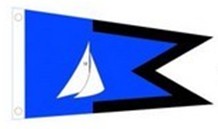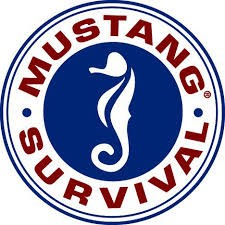Forum Replies Created
-
AuthorPosts
-
I understand your reasoning. Maybe when you trailer your boat to the Blaine Regatta in May (hint, hint) you can pull in to the truck weigh scales just before the border and weight the boat and trailer to find out how much it really weighs. I think everyone should do that at least once. It can be revealing. It’s free if you are passing by try it.
4000 lbs towing capacity sounds iffy. The boat and trailer from the dealer was 3000 lbs. Add a few things like an anchor, fuel, water and basic “stuff” and don’t forget the the stuff in the vehicle counts so a couple people (at least 300 lbs) and I think you will be over the tow capacity. Also what is the maximum tongue weight capacity? You need 350-400 lbs. check out the Trailer presentations https://www.mycbc.ca/wp-content/uploads/simple-file-list/Presentations/Trailer-part-of-Trailer-Sailors.pdf
Add DC clamp meter to test electrical connections
You should plan to attend the Commodores Cruise Zoom Planning meeting Wednesday June 21 at 7 pm. Meeting link will be emailed to you tomorrow. All your questions will be answered.
This was a difficult concept for me also. The key thing is the terminology that is used for 2 very different things. The terms high and low refer to tides which is the vertical measure of the surface moving up and down as a result of the moon’s gravity. Currents on the other hand are a horizontal movement of the water. There really isn’t such a thing as “high slack”. Think of it as “slack when the water is highest or lowest”. It might seem logical that the water would flow horizontally (current) until the vertical maximum or minimum are reached (tides). If you were filling a pool that would work. The water flows in the pipe until the level is full. In the real world the pool you are measuring your tide in has many entrances (pipes) flowing in and out at the same time so you cannot assume the time of maximum flow is the same as the time of maximum height. The rules are if you are looking to anchor or are worried about depth consult the TIDE TABLES but if you are worried about current flow you need to consult the CURRENT TABLES.
They are related but definitely not the same thing.I used landscape ties in an X from the ground up to a couple stacks of 2×4 about 2 feet high on each side for the back. Used the trailer Jack to lower the bow and place the supports under the stern. I then used the Jack to raise the front of the trailer until the boat was off the axle and sterns trailer bunks. Then built a tower of 2×6 to place under the bow. When I lowered the Jack the boat was supported just above the trailer bunks and I was able to slide the trailer back a few inches.
If you want to bottom paint you should use the club’s Go Hoist and support stands. Look under the resources tab for club tools. Good luck.Drop toungue as lo as possible. Build blocks under the stern as high as you can. Use Jack to lift front of trailer. I have used a bottle Jack on the trailer frame to raise toungue. Build blocks under keel at bow. Lower trailer tongue until boat is clear of bunks. You can now slide trailer back to proper position. Reverse blocking procedure and you are good to go. DEFINITELY DO NOT TRAILER WITH THE BOAT THAT FAR BACK.
I have used a hole saw on my drill to cut several holes in the plexiglas with no issues.
Yes I have the stock MacGregor furler. Everything works fine.
Hi Paul.
I have the same anchor and it fits fine on my M. Check out Gemini mods in the Video Gallery.Hi David,
Nice work on the composting toilet. The only thing I see missing is some way to stir the solids into the Peat moss. That is what dries the solids and prevents smells. Are you planning to just seal and remove the solids each time? Otherwise I think you might get some smells.What make and model? Is it approved for indoor use?
Hi David.
I highly recommend the C-head composting toilet. No smells, no messy dumping. The other makes of composting toilets are more expensive and limited by proprietary liquid collection containers. Check out the Mod Video in the Gallery.Thanks Alex.
Great information. I think you might be over calculating the AH use of the Engel. I have one and have calculated the AH based on 2 amps but it does not run continuously. I have estimated that it actually runs about 1/4 of the time so (2 amps x 24 hr)x .25 = 12AH per day.
I bought 2 lead acid AGM batteries last year but have not had a chance to try them out. I should have about 190 AH of which 90 AH would be useable to keep batteries to required minimum 50% charge.
Firefly batteries cost at least 3-4 times as much as my AGM’s. I couldn’t justify the extra cost.On the Marine Trails map you will find some in Howe Sound. Porteau Cove Prov Park has a small dock and also a mooring ball
-
AuthorPosts













